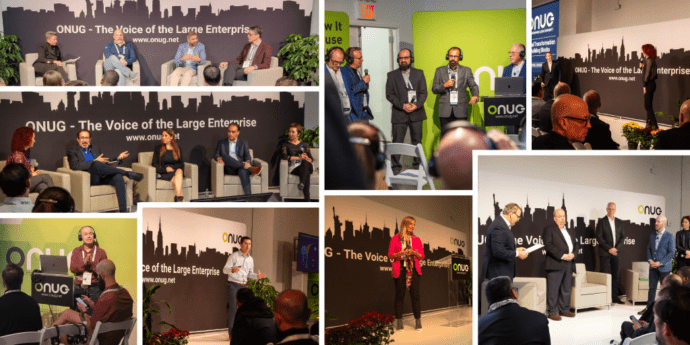
The Evolution of Tech Eras: Internet, Cloud, and AI—Key Differences and AI’s Resurgent Drive
In a recent interview with Chris Drumgoole, President of DXC Technology’s operating unit and former Global CIO at GE, Nick Lippis of ONUG explored the transformative shifts across the internet, cloud, and AI eras. These technological epochs, while interconnected, differ significantly in deployment dynamics, cultural impact, and operational challenges. Here are five key areas of distinction and an analysis of why AI’s adoption mirrors the internet era, accelerating its rollout and challenging IT teams to adapt rapidly.
- Speed of Adoption: The internet era emerged organically, driven by grassroots demand for connectivity, taking years to scale. The cloud era, propelled by hyperscalers’ marketing, saw rapid adoption but faced resistance from traditional IT teams unprepared for the shift. AI, however, is advancing at a breakneck pace—10 times faster than cloud—fueled by user demand and accessible tools like ChatGPT, as Drumgoole noted, even among his teenage daughter’s peers.
- Driver of Change: The internet’s growth was internally driven by organizations and individuals seeking connectivity, not external hype. Cloud adoption was heavily marketed by providers like Amazon and Microsoft, pushing enterprises to adopt despite operational unreadiness. AI’s deployment, Drumgoole emphasized, is a “pull” from within—users and developers demand AI infrastructure, reversing the cloud-era push.
- Cultural Impact: The internet fostered a culture of openness and collaboration, breaking down silos gradually. Cloud required a cultural shift toward DevOps and outsourcing, often meeting resistance. AI is dismantling silos faster, empowering cross-functional teams with tools that transcend traditional boundaries, as Drumgoole highlighted, driven by digitally native workers impatient with rigid hierarchies.
- Operational Challenges: The internet era’s challenges were technical, like bandwidth and security, managed internally. Cloud introduced governance issues, data sovereignty, and cost surprises, requiring new IT frameworks. AI brings complex governance (data rights, IP ownership) and cultural restructuring, but its tools are more accessible, amplifying operational demands on IT to keep pace.
- Job and Skill Evolution: The internet created new roles (web developers) but didn’t immediately threaten existing ones. Cloud automation reduced some IT jobs but created others in cloud management. AI, Drumgoole warned, won’t replace jobs directly but will favor those with AI skills—like prompt engineering, now a critical competency—risking obsolescence for those who resist adaptation.
Why AI Resembles the Internet Era: Unlike the cloud era, where marketing hype drove adoption, AI’s deployment mirrors the internet’s organic, internal momentum. Users—developers, employees, even students—are adopting AI tools independently, creating a grassroots pull that forces IT to respond rapidly. Drumgoole’s anecdote about his daughter using AI for school projects underscores this: AI’s accessibility and utility drive demand, not vendor campaigns. This internal momentum accelerates adoption, as businesses rethink workflows, automate processes, and break silos, pressuring IT to deliver infrastructure and governance models swiftly. The internet’s cultural shift to connectivity parallels AI’s empowerment of cross-functional collaboration, contrasting with cloud’s top-down push.
This rapid adoption challenges IT teams to upskill in AI, address governance risks (data privacy, IP), and rethink corporate structures. Drumgoole’s insights suggest IT leaders must guide legal, finance, and compliance teams, leveraging their tech expertise to balance innovation and risk.
Call to Action: Don’t miss the AI Networking Summit in Dallas this May, hosted by ONUG. Featuring workshops on prompt engineering and discussions on AI’s operational impact, this event is your chance to learn, network, and prepare for the AI era’s challenges and opportunities. Secure your tickets today and join industry leaders like Chris Drumgoole in shaping the future of tech.


